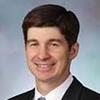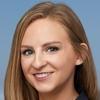Pollution Exclusion in CGL Policies: Clarifying the Exclusion to Avoid Litigation and Coverage Gaps
Recording of a 90-minute CLE video webinar with Q&A
This CLE course will guide insurance counsel through the many different forms of "pollution exclusion" clauses in commercial general liability (CGL) policies, explore why they exclude many types of losses not caused by hazardous materials, review differing court interpretations of the exclusion, and offer best arguments for insurers and policyholders for either avoiding or maximizing coverage.
Outline
- Pollution exclusion provision language
- Traditional pollution vs. nontraditional pollution
- Recent case law developments
Benefits
The panel will review these and other significant questions:
- How do courts make the distinction between traditional and nontraditional sources of pollution?
- What are the most recent developments in applying the pollution exclusion to damages?
Faculty

Daniel J. Healy
Partner
Anderson Kill
Mr. Healy represents policyholders seeking insurance coverage, and is Deputy Co-Chair of the Cyber Insurance Recovery... | Read More
Mr. Healy represents policyholders seeking insurance coverage, and is Deputy Co-Chair of the Cyber Insurance Recovery Practice Group, as well as a member of the firm's Regulated Products Group. He previously served as a Trial Attorney with the United States Department of Justice, Tax Division. He served as lead trial counsel litigating cases involving tax shelters, fraud, substantive tax disputes and claims to real property. He often writes and speaks about insurance recovery issues.
Close
Melissa A. Sereda
Attorney
BatesCarey
Ms. Sereda is an associate whose practice focuses on serving as coverage and litigation counsel to primary and excess... | Read More
Ms. Sereda is an associate whose practice focuses on serving as coverage and litigation counsel to primary and excess insurers in connection with professional and commercial general liability claims. She advises her clients in pre-litigation coverage analysis and represents insurers in professional liability coverage matters, including D&O, E&O, and other professional liability risks. Ms. Sereda has also represented her clients in various matters involving environmental, construction defect, sexual harassment and molestation, and product defect claims, in state and federal courts across the country.
Close